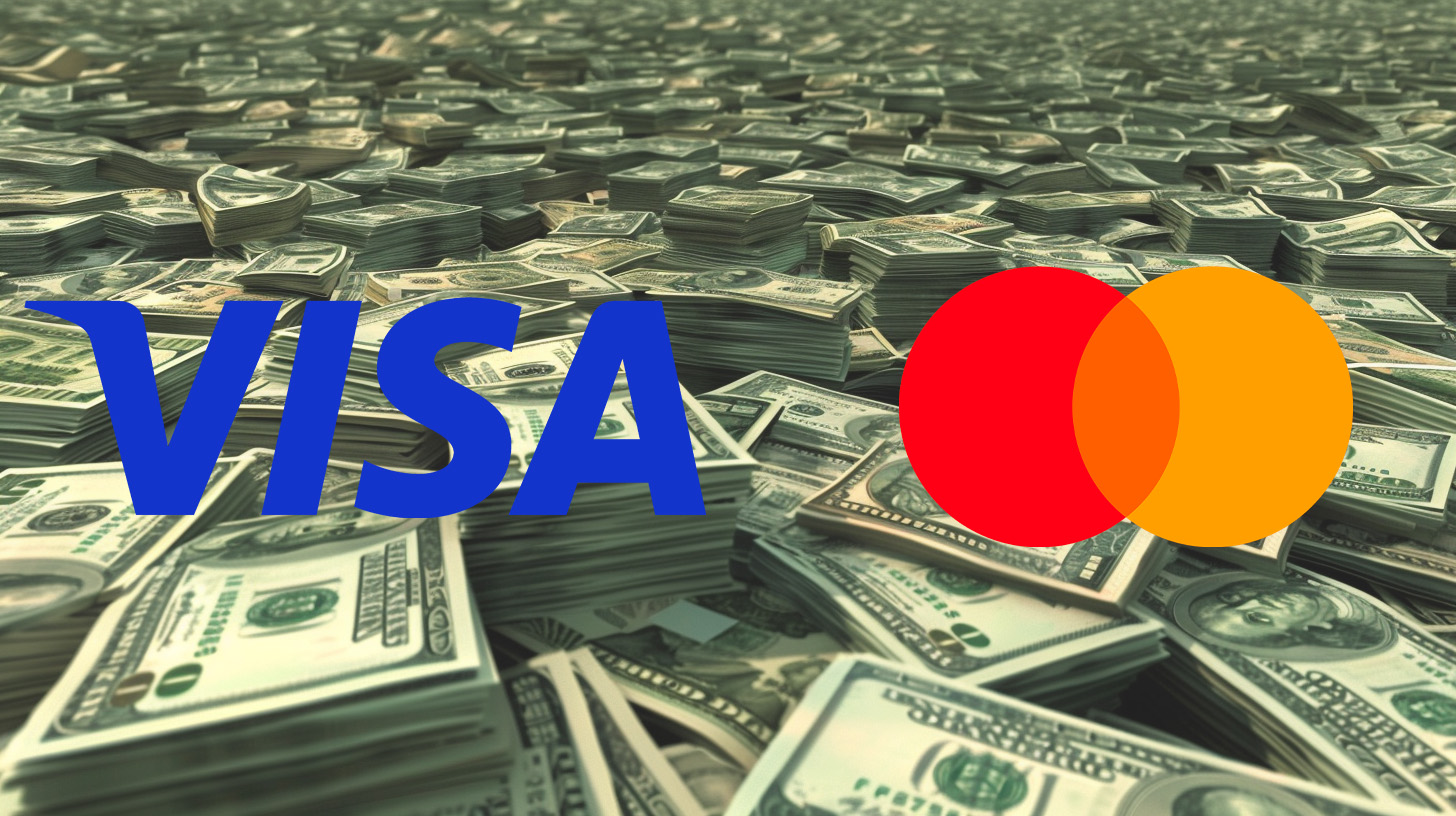
How to Add Payment Options to Shopify: A Step-by-Step Guide for Online Merchants
Apr 24, 2024 4 minutes
As a Shopify store owner, offering multiple payment options is crucial for providing a seamless checkout experience and maximizing conversions. In today’s ecommerce landscape, customers expect the flexibility to choose their preferred payment method, whether it’s a credit card, digital wallet, or even cryptocurrency.
Whether you’re a new Shopify merchant setting up your payment options for the first time or an established store owner looking to expand your payment offerings, this post will equip you with the knowledge and tools necessary to make informed decisions and streamline your checkout process.
We can connect you with the right solutions!
Understanding Payment Processing on Shopify
When a customer places an order on your Shopify store, the payment goes through a process called payment processing. This involves the customer’s payment method (such as a credit card) being verified, the funds being authorized, and the money being transferred to your merchant account.
Shopify simplifies this process by integrating with various payment gateways and providers. A payment gateway is a service that facilitates the secure transfer of payment information between your store, the customer’s bank account, and your merchant account.
When a customer enters their payment information and confirms their order, the payment gateway communicates with the issuing bank to ensure the payment method is valid and has sufficient funds. If approved, the issuing bank sends authorization of the payment, and the funds are captured and transferred to your merchant account, minus any applicable fees.
The role of payment providers is to handle the complex process of securely accepting, verifying, and processing payments on your behalf. They ensure compliance with various financial regulations and protect both the merchant and customer from fraud. By using Shopify’s integrated payment providers, you can start accepting payments quickly without the need for a merchant account or extensive technical setup (though this is risky!).
It’s important to note that while payment processing is largely automated, there may be a delay between when a customer places an order and when you receive the funds in your account. This delay can vary depending on your payment provider and their payout schedule. For example, Shopify Payments typically transfers funds to your account within 2-3 business days.
Why Consider Alternative Payment Options?
While Shopify Payments is a convenient and integrated solution, there are several compelling reasons why Shopify store owners should consider offering alternative payment options.
Firstly, providing a diverse range of Shopify payment methods caters to the varying preferences of your customers. Some shoppers may prefer using digital wallets like Google Pay, Apple Pay, or Shop Pay for their convenience and added security features, while others might feel more comfortable with traditional credit card payments. By accommodating these preferences, you can create a more inclusive shopping experience and potentially attract a wider customer base.
Moreover, certain industries or business models may benefit from using alternative payment gateways and processors. For example, high-risk businesses, such as those selling CBD products, adult content, or subscription-based services, may face challenges when using Shopify Payments due to stricter regulations and higher chances of chargebacks. In such cases, partnering with a high-risk payment processor that specializes in these industries can provide more stable and reliable payment processing solutions.
Offering alternative payment options can also help you tap into emerging trends and technologies. As cryptocurrency gains mainstream adoption, accepting digital currencies like Bitcoin or Ethereum can attract tech-savvy customers and demonstrate your brand’s innovation. Similarly, providing buy now, pay later options like installment plans or subscription-based payments can make your products more accessible to budget-conscious shoppers and encourage larger purchases.
Another benefit of integrating multiple payment gateways is the added resilience it brings to your checkout process. In the event that one payment provider experiences technical issues or downtime, having backup options ensures that your customers can still complete their purchases without disruption.
Lastly, while Shopify Payments offers competitive rates, some alternative payment processors may provide lower transaction fees or more favorable terms for your specific business model. Many businesses save thousands from switching. By comparing the costs and features of different providers, you can optimize your online payment setup to maximize your profit margins.
Online businesses are high risk! Get the right payment solutions today.
Step-by-Step Guide: Adding Payment Options to Your Shopify Store
Adding payment options to your Shopify store is a straightforward process that can be completed in a few simple steps. Follow this guide to set up Shopify Payments and integrate alternative payment methods.
1. Accessing payment settings in your Shopify admin:
- Log in to your Shopify account and navigate to the admin dashboard.
- Click on “Settings” in the bottom left corner and then select “Payment providers”.
2. Setting up Shopify Payments (if desired):
- If you want to use Shopify Payments, click on “Activate Shopify Payments” in the Shopify Payments section.
- Follow the prompts to provide your business and banking information for account setup and authentication.
- Once approved, Shopify Payments will be automatically enabled as your primary payment method.
3. Add payment methods:
- In the “Payment providers” section, click on “Choose third-party provider” to view a list of additional payment methods and gateways that Shopify supports.
- Select the desired payment provider (e.g., PayPal, Amazon Pay, or cryptocurrency gateways) and click “Activate”.
- Follow the instructions provided by the payment gateway to set up your account and authenticate your business information.
- Configure the checkout experience by customizing the display name, logo, and other settings for the new payment option.
4. Activating and testing new payment options:
- After configuring your alternative payment methods, make sure they are enabled in your payment settings.
- Place a test order on your Shopify store to ensure that the new payment options are functioning correctly and that funds are being processed and transferred to your account.
- Monitor your payment settings regularly to track the performance of your payment methods and make any necessary adjustments.
By following these steps, you can easily add Shopify Payments and alternative payment options to your online store, providing your customers with a variety of convenient and secure ways to complete their purchases.
Tips for a smooth payment setup process:
- Ensure that your business information and banking details are accurate and up-to-date to avoid delays in account approval and payouts.
- Carefully review the terms, conditions, and fees associated with each payment provider before activation.
- Customize your checkout experience to reflect your brand and create a seamless user experience for your customers.
- Keep your payment settings organized by deactivating any unused payment methods and regularly reviewing your transaction history for any discrepancies or errors.
With a well-configured payment setup, you can streamline your checkout process, reduce cart abandonment, and ultimately boost your online sales.
Popular Payment Gateways and Processors for Shopify
In addition to Shopify Payments, there are several popular third-party payment gateways and processors that integrate seamlessly with the Shopify platform. These providers offer unique features and benefits that may cater to specific business needs or preferences.
- Stripe
- Stripe is a widely-used payment processor known for its developer-friendly APIs and customizable checkout experience.
- It supports a wide range of payment methods, including credit cards, digital wallets, and local payment options.
- Stripe offers competitive transaction fees and advanced fraud prevention tools.
- Shopify Payments is powered by Stripe.
- PayPal
- PayPal is a well-established payment gateway that offers a trusted and recognizable checkout option for customers.
- It provides a secure and user-friendly payment experience, with support for multiple currencies and countries.
- PayPal’s buyer protection program can help build trust with customers, but it may also lead to a higher risk of chargebacks for merchants.
- Square
- Square is a popular choice for businesses that have both online and offline sales channels.
- It offers a comprehensive suite of tools, including point-of-sale hardware, inventory management, and customer engagement features.
- Square’s transaction fees are competitive, and it provides instant access to funds for eligible merchants.
- Authorize.net
- Authorize.net is a reliable payment gateway that has been in the industry for over two decades.
- It offers a secure and stable platform for processing payments, with support for a variety of payment methods and currencies.
- Authorize.net provides advanced fraud detection tools and detailed reporting features, making it a good choice for established businesses.
We’re happy to help find the best gateway and processor for your business.
Some factors to consider when choosing a backup payment provider include:
- Supported payment methods and currencies
- Transaction fees and pricing structure
- Fraud prevention and security features
- Ease of integration with your Shopify store
- Customer support and dispute resolution processes
By carefully evaluating your business needs and comparing the offerings of different payment providers, you can create a robust and diversified payment setup that optimizes your Shopify store’s performance and customer experience.
Optimizing Your Shopify Checkout Experience
Once you have set up your preferred payment options on your Shopify store, it’s crucial to optimize your checkout experience to maximize conversions and reduce cart abandonment. Here are some tips to streamline your checkout process and provide a seamless experience for your customers.
- Offer multiple payment options
- Provide a variety of payment methods to cater to different customer preferences and needs.
- Include options like credit cards, digital wallets, and alternative payment methods to create an inclusive checkout experience.
- Clearly display your accepted payment options on your product pages and during the checkout process to build trust and confidence with your customers.
- Simplify your checkout process
- Minimize the number of steps required to complete a purchase by offering a guest checkout option and reducing unnecessary form fields.
- Use a progress indicator to show customers how close they are to completing their purchase.
- Provide clear and concise error messages to help customers quickly resolve any issues that may arise during the checkout process.
- Optimize for mobile devices
- Ensure that your checkout page is mobile-responsive and easy to navigate on smaller screens.
- Use large, touch-friendly buttons and clear calls-to-action to guide customers through the checkout process.
- Minimize the need for scrolling and zooming by presenting important information and fields in a clear and concise manner.
- Offer flexible payment options
- Consider offering installment plans or subscription-based payments to make your products more accessible to budget-conscious shoppers.
- Integrate with buy now, pay later services like Klarna or Afterpay to provide customers with more flexibility and encourage larger purchases.
- Clearly communicate the terms and conditions of these payment options to ensure transparency and build trust with your customers.
- Provide clear communication and support
- Display security badges and trust seals on your checkout page to reassure customers that their payment information is safe and secure.
- Provide clear and accessible customer support options, such as live chat or a dedicated support email, to assist customers with any questions or issues they may encounter during the checkout process.
- Send confirmation emails and order updates to keep customers informed about the status of their purchase and build post-purchase engagement.
- Monitor and analyze your checkout performance
- Use Shopify’s built-in analytics or third-party tools to track your checkout funnel and identify areas for improvement.
- Monitor key metrics like cart abandonment rate, conversion rate, and average order value to gauge the effectiveness of your checkout optimization efforts.
- Continuously test and refine your checkout experience based on customer feedback and data-driven insights.
By implementing these optimization strategies and leveraging the power of multiple payment options, you can create a frictionless checkout experience that boosts conversions, increases customer satisfaction, and drives long-term success for your Shopify store.




